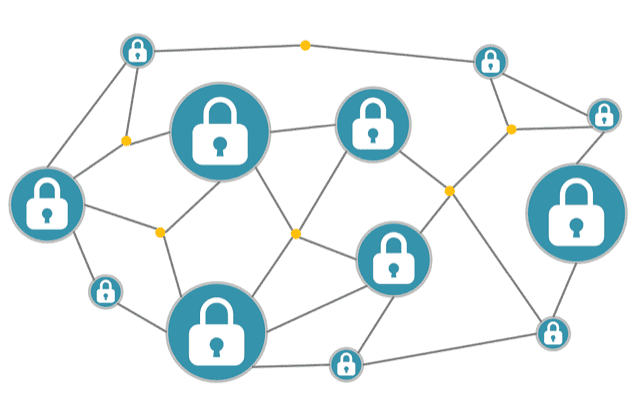When a person uses an application like Zelle or Venmo to pay a friend, the operation proceeds smoothly and without incident. With a few ‘user initiated’ steps the transaction concludes, one account balance declines while the other account balance increases – at least when viewed on-line. Behind the scenes, complex networking systems work in tandem to seamlessly validate transaction initiator and transaction receiver identities…and then the payment is cleared. The process is typically filled with inefficiencies and dependent on a complicated maze of systems spread across multiple disbursement and financial entities.
Author Satoshi Nakamoto described in a 2008 paper a completely different approach: a peer-to-peer electronic cash system that could completely simplify the on-line payment process by removing the need for banks or other 3 rd party intermediary entities. The system, known as Bitcoin, has an overall market capitalization over $63 billion as of January, 2019. But it is Bitcoin’s core technology, known as blockchain, that has the potential for making a lasting ground-breaking impact. Blockchain creates a public record of trades that allows users to validate their Bitcoins and establish trust amongst one another.
What is Blockchain?
At its root, blockchain is a publicly accessible, distributed ledger of electronic transactions in which each transaction is time-stamped and reported, allowing recipients to verify that a digital currency transaction (or any other commodity transaction for that matter) is valid both at the time sent and received. Once blockchain is seen as a transaction ledger and digital currency as only an application, it starts to become apparent that blockchain technology might apply to nearly all types of businesses and transactions.
The distributed blockchain ledger is replicated across many different computers. As such, there are major communications and processing costs associated with blockchain updates, especially with the high frequency a digital currency might require. The size of the Bitcoin blockchain, for example, has surpassed 197 GB in January 2019, and there are over 10,000 nodes online full time that need to be updated constantly.
Blockchain Mining Security Challenges
With a digital currency such as Bitcoin, the addition of transaction records to the blockchain public ledger of past transactions is known as mining. Mining for Bitcoin can be compared to mining for gold—miners put in the work and they get their reward. But instead of back-breaking labor, miners earn the currency with their time and computer processing power. “Miners”, as they are called, essentially upkeep and help secure Bitcoin’s decentralized accounting system.
Each bitcoin transaction is recorded in the blockchain digital ledger. Miners help to update the ledger by downloading a bitcoin mining software package that allows them to add new transactions to the blockchain ledger. Miners achieve this by solving a computational problem which allows them to chain together blocks of transactions. In return, miners earn Bitcoins.
Since miners need growing levels of CPU processing power to earn Bitcoin, enterprise networks are being compromised to access servers and users’ devices for mining. In fact, this has become such a widespread problem that vulnerable IoT devices, from smartphones to security cameras and smart TVs, are all at risk of “crypto-jacking” and being used for mining cryptocurrencies. A device that is “crypto-jacked” could have 100 percent of its resources being used for mining, causing the device to overheat, essentially destroying it.
Blockchain Security Incidents
Bitcoin as a cryptocurrency implements SHA-256 encryption as an essential part of the protocol, in order to establish anonymous and decentralized currencies, and transaction verification. That said, the security of the bitcoin protocol lies in one of its fundamental characteristics, the transaction blockchain. While the bitcoin protocol may itself have strong security capabilities; however, this does not encompass all the sites and services which support bitcoin transactions.
The earliest and most notable bitcoin-related security incident was that of Mt. Gox. The company, which was at one time one of the leading Bitcoin exchange services, filed for bankruptcy in late February 2014, after losing $468 Million worth of bitcoin. Mt. Gox’s downward spiral started in early February 2014, when it, alongside other Bitcoin exchanges, halted Bitcoin transactions alluding to a high level of Distributed Denial of Service (DoS) attacks aimed at manipulating bitcoin’s transaction flexibility.
The cryptocurrency market has evolved indeed - criminals routinely use malware available from the dark web to facilitate nearly $1 Billion of cryptocurrency theft in 2018. The malware can cost as low as low as $10. The surprising aspect of this is just how easy it has become for even non-technical individuals to commit cybercrimes like crypto-theft.
There are now an estimated 12,000 marketplaces and 34,000 offerings related to crypto-theft for hackers to choose from. Businesses are the second most exposed group. In numerous cases, criminals target the internal system of these companies and require cryptocurrency as a payoff (in the U.S. businesses do not have to report a ransomware incident because it does not comprise personal data).
Precision Engineered Hardware Security Module ‘Hardware’
Interface Masters Technologies’ embedded network appliances are scalable network security platforms capable of providing the hardware/software foundation for network security appliances. The Interface Masters appliances feature off-the-shelf server hardware technologies to enable fully integrated network security appliances supporting high-performance threat protection including real-time memory and deep packet inspection capabilities. The embedded appliance platform portfolio also includes foundational software and open interfaces for management and orchestration, which simplifies operation and enables easier integration. From a deployment perspective, the Interface Masters platforms can be equipped to support network security appliance deployments in enterprise, small-business or branch office environments.
Interface Masters Technologies has for over 20 years been providing off-the-shelf innovative networking solutions with customization services to OEMs, Fortune 100 and startup companies. We are headquartered in San Jose, California in the heart of Silicon Valley where we proudly design and manufacture all products. Based on MIPS, ARM, PowerPC and x86 processors, Interface Masters appliance models enable OEMs to significantly reduce time-to-market with reliable, pre-tested and pre-integrated appliance solutions that can meet the most challenging networking requirements.


